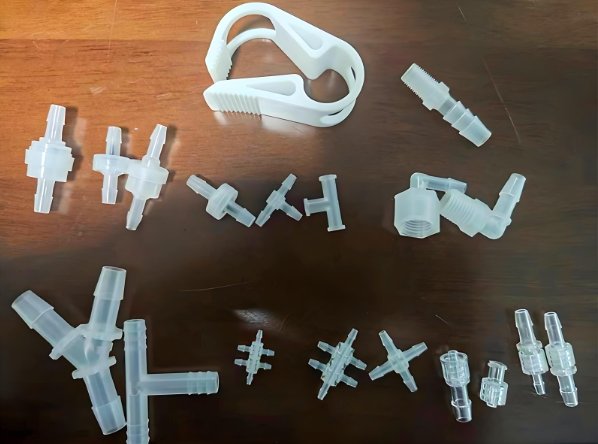
Sustainability is becoming essential in medical injection molding. The industry must balance high-quality production with eco-friendly solutions. Mold makers are adopting greener practices to reduce waste, energy consumption, and environmental impact. This article explores the latest sustainable practices in medical molding.
Why Sustainability Matters in Medical Injection Molding
1. Reducing Plastic Waste
Medical device production generates significant plastic waste. Sustainable practices help minimize excess material.
2. Meeting Regulatory Standards
Governments are implementing stricter environmental regulations. Compliance ensures long-term industry growth.
3. Lowering Carbon Footprint
Energy-efficient machines and processes reduce greenhouse gas emissions.
4. Improving Cost Efficiency
Eco-friendly materials and energy-saving methods lower operational costs.
5. Enhancing Corporate Responsibility
Sustainable practices improve a company’s reputation and attract environmentally conscious clients.
Key Sustainable Practices in Medical Injection Molding
1. Using Biodegradable and Recyclable Materials
- Bioplastics derived from renewable sources reduce plastic waste.
- Recyclable medical-grade polymers ensure reusability.
- FDA-approved sustainable resins maintain product safety.
2. Reducing Material Waste with Advanced Molding Techniques
- Micro molding produces small, precise parts with minimal waste.
- Overmolding eliminates the need for adhesives and extra components.
- Multi-shot molding integrates multiple materials in one step.
3. Implementing Energy-Efficient Machinery
- Electric injection molding machines use less energy than hydraulic models.
- Servo-driven motors optimize energy use based on demand.
- Smart sensors monitor and reduce excess power consumption.
4. Recycling and Reusing Scrap Materials
- Automated systems separate and recycle defective parts.
- Closed-loop recycling repurposes excess plastic into new products.
- Scrap reduction strategies minimize overall waste.
5. Optimizing Mold Design for Sustainability
- Mold makers create lightweight, durable molds that last longer.
- 3D-printed molds reduce material usage and speed up production.
- Conformal cooling systems improve efficiency and reduce cycle times.
6. Reducing Water Consumption in Molding Processes
- Closed-loop water cooling recycles water instead of wasting it.
- Eco-friendly cleaning solutions reduce chemical pollution.
- Advanced filtration systems ensure clean and reusable water.
7. Implementing Smart Manufacturing and Automation
- AI-powered quality control minimizes defects and material waste.
- IoT-connected machines optimize energy use in real-time.
- Automated packaging reduces unnecessary materials.
The Role of Mold Makers in Sustainable Injection Molding
1. Designing Eco-Friendly Molds
- Mold makers create high-precision molds that reduce material waste.
- They use lightweight mold materials for energy efficiency.
2. Extending Mold Lifespan
- Coated molds resist wear and last longer.
- Automated maintenance systems track mold conditions to prevent failures.
3. Supporting Sustainable Material Innovations
- Mold makers test and validate biodegradable resins.
- They help manufacturers switch to low-impact materials.
Challenges in Adopting Sustainable Practices
1. Higher Costs of Eco-Friendly Materials
- Biodegradable plastics are often more expensive.
- Investment in sustainable materials pays off long-term.
2. Regulatory Compliance Complexity
- New materials must pass FDA and ISO certifications.
- Testing and validation require time and resources.
3. Transitioning from Traditional Molding Methods
- Older machines may not support sustainable processes.
- Upgrading equipment requires capital investment.
4. Maintaining Product Quality and Performance
- Eco-friendly plastics must match the durability of traditional materials.
- Extensive testing ensures medical safety standards are met.
Latest Innovations in Sustainable Medical Injection Molding
1. Plant-Based Bioplastics
- Derived from corn, sugarcane, and algae.
- Fully biodegradable while maintaining strength.
2. Recycled Medical-Grade Polymers
- Made from post-consumer and post-industrial plastic waste.
- Meets ISO 10993 biocompatibility standards.
3. Zero-Waste Manufacturing Systems
- AI-driven production reduces material loss.
- Waste tracking software improves efficiency.
4. Low-Emission Molding Machines
- Uses hybrid electric-hydraulic technology.
- Cuts CO₂ emissions by up to 50%.
5. Green Packaging Solutions
- Compostable and recyclable packaging replaces plastic wraps.
- Minimalist designs reduce excess material use.
Future Trends in Sustainable Medical Injection Molding
1. Fully Biodegradable Medical Devices
- Single-use products will be made from 100% compostable materials.
- FDA-approved green alternatives will replace traditional plastics.
2. AI-Powered Sustainable Manufacturing
- AI will optimize resource use and minimize waste.
- Machine learning will improve material selection for eco-friendliness.
3. Carbon-Neutral Injection Molding Facilities
- Factories will run entirely on renewable energy.
- Solar and wind power will replace fossil fuels in manufacturing.
4. Smart Supply Chain Management
- Real-time tracking of sustainable materials.
- Blockchain technology will improve transparency in eco-friendly sourcing.
5. Government Incentives for Green Manufacturing
- Tax credits for sustainable medical injection molding.
- Grants for research into biodegradable medical plastics.
Sustainability is reshaping medical injection molding. Mold makers and manufacturers are adopting eco-friendly materials, energy-efficient machines, and waste reduction strategies. As technology advances, the industry will move toward zero-waste production and carbon-neutral facilities. Investing in sustainability benefits the environment, reduces costs, and ensures long-term success.
